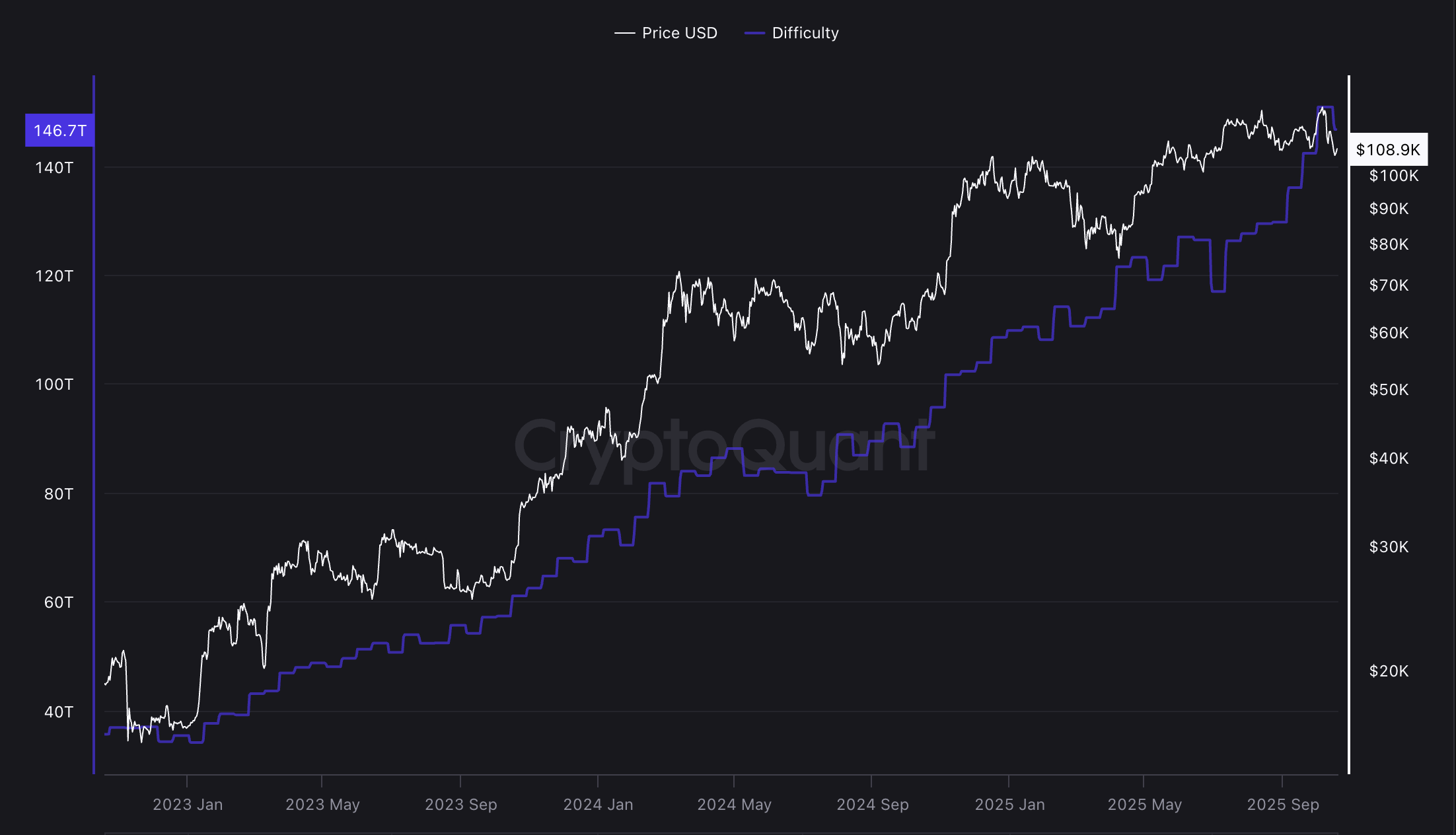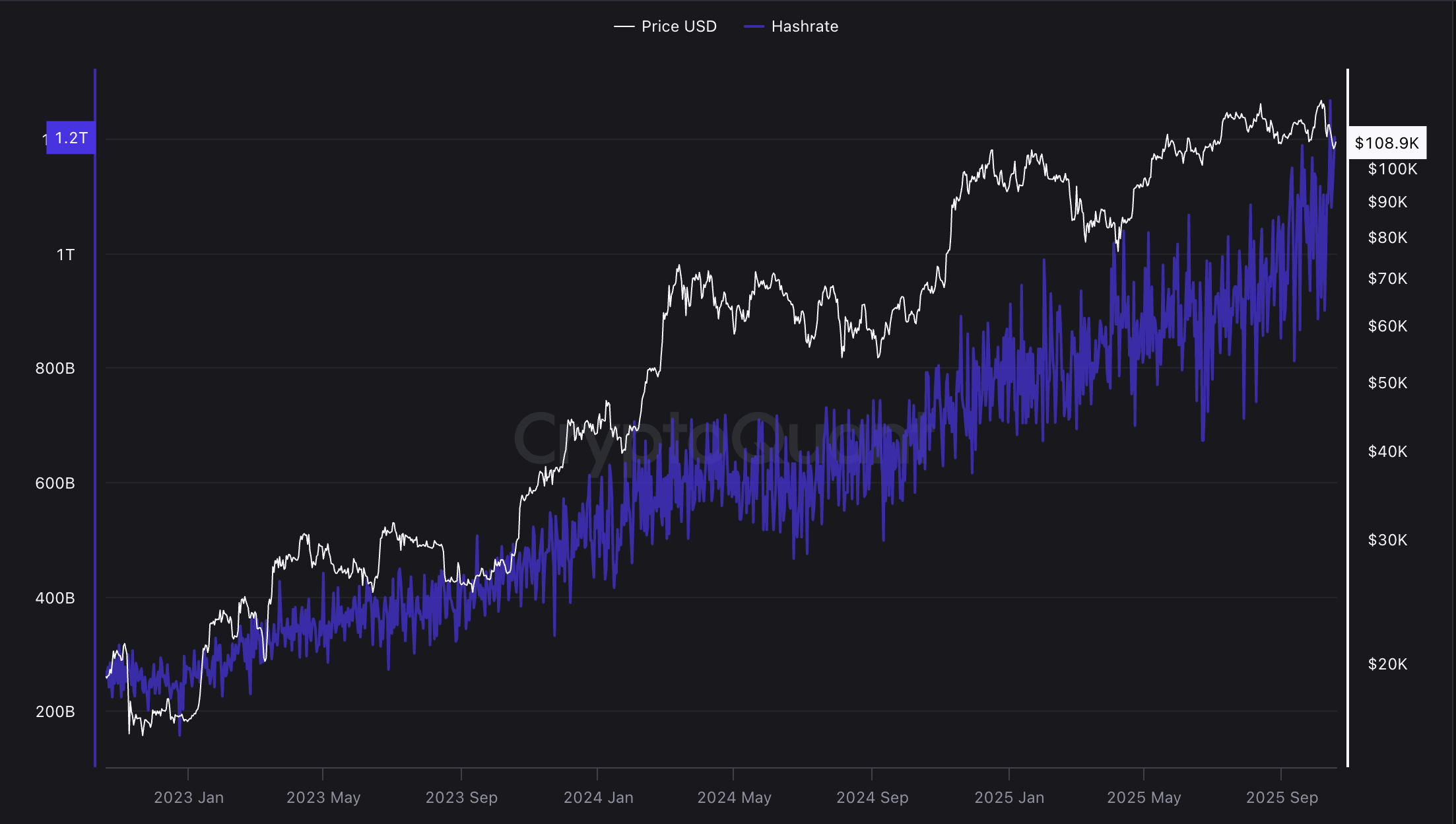
Bitcoin’s mining network has reached a historic peak of over 1.2 trillion hashes per second as of Tuesday, maintaining this high level despite a recent decline in mining difficulty, which now stands at 146.7 trillion. This marks a 2.7% decrease from the previous record of over 150.8 trillion.
 Bitcoin mining difficulty drops. Source: CryptoQuant
Bitcoin mining difficulty drops. Source: CryptoQuant
The most recent data from CryptoQuant reveals that although the hashrate dipped slightly from its peak, it remains significantly high, placing pressure on miners ahead of the next difficulty adjustment scheduled for October 29, 2025, projected to increase difficulty to 156.92 trillion.
The increase in hashrate suggests that miners will need to invest more computational resources to maintain operations, challenging them further amidst evolving industry conditions, including trade policies and competition.
 Bitcoin network hashrate hitting record highs. Source: CryptoQuant
Bitcoin network hashrate hitting record highs. Source: CryptoQuant
Miners explore alternative revenue sources to mitigate losses from crypto mining, including AI data centers. Companies like Core Scientific, Hut 8, and IREN are reallocating resources towards AI to increase profitability.
Competition for energy sources between AI firms and mining companies has intensified, complicating the landscape as both sectors depend heavily on affordable energy. Additionally, regulatory hurdles stemming from US President Donald Trump’s trade tariffs are hampering miners’ capabilities and affecting hardware acquisition costs.
In conclusion, while innovations in revenue generation are underway, challenges such as regulatory scrutiny and the impact of tariff-based policies persist for the mining sector.


